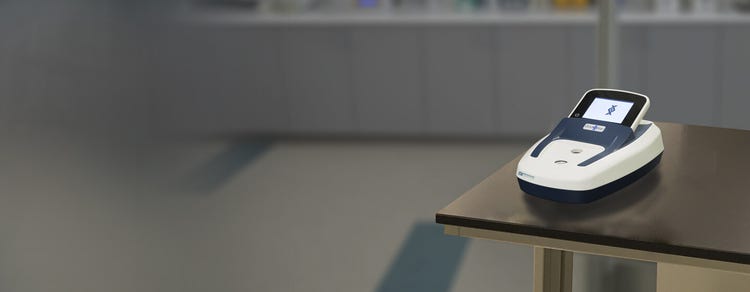

SpectraMax QuickDrop UV-Vis Spectrophotometer
One-touch DNA, RNA, and protein quantification in a full-spectrum micro-volume absorbance UV-Vis spectrophotometer
Standalone instrument with touchscreen and built-in sample ports for small volumes and cuvettes
The SpectraMax® QuickDrop™ UV-Vis Spectrophotometer quantifies very small amounts of DNA, RNA, oligos, and proteins. The small footprint and touchscreen control allows for easy laboratory setup with minimal investment of time, cost, and effort. The built-in micro-volume sample port allows for working with sample volumes as small as 0.5 µL, while the cuvette port expands sample capacity to include larger volumes.

Increase sensitivity
The SpectraMax QuickDrop UV-Vis Spectrophotometer has a four-second read time and no moving parts. It maintains an accurate pathlength, providing you with fast and accurate results regardless of viscosity.

Easy to use
The large, high-resolution touchscreen offers preconfigured analysis methods, easy setup of customized experiments including kinetic assays, and allows you to work in six different languages.

Streamline workflows
The spectrophotometer is maintenance-free and requires no calibration. One-swipe cleaning streamlines your workflow and allows you to quickly move from sample to sample.
Features

Small footprint
This stand-alone unit with a small footprint does not require a direct connection to a dedicated computer.

Flexible data analysis
Results can be viewed on the large touchscreen, or data can be exported to a computer for additional analysis using a USB flash drive.
